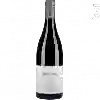
Winery La Tour BajoleCuvée Anne Marie Bourgogne Rosé
This wine generally goes well with
Details and technical informations about Winery La Tour Bajole's Cuvée Anne Marie Bourgogne Rosé.
Discover the grape variety: Lignage
Noble grape variety, formerly known in Loir et Cher, more precisely on the right bank of the Loire Valley between Blois and Tours. It is completely unknown in other French wine regions and abroad. Absent today from the Loire vineyards, its reintroduction, even if limited, should not be long in coming.
Informations about the Winery La Tour Bajole
The Winery La Tour Bajole is one of wineries to follow in Bourgogne.. It offers 6 wines for sale in the of Burgundy to come and discover on site or to buy online.
The wine region of Burgundy
Bourgogne is the catch-all regional appellation title of the Burgundy wine region in eastern France ("Bourgogne" is the French name for Burgundy). Burgundy has a Complex and comprehensive appellation system; counting Premier Cru and Grand Cru titles, the region has over 700 appellation titles for its wines. Thus, Burgundy wines often come from one Vineyard (or several separate vineyards) without an appellation title specific to the region, Village or even vineyard. A standard Burgundy wine may be made from grapes grown in one or more of Burgundy's 300 communes.
The word of the wine: Draft liquor
Liqueur composed of sugar dissolved in wine, used for the dosage of sparkling wines made by the traditional method. It is also known as "liqueur d'expédition" or "liqueur de dosage".














